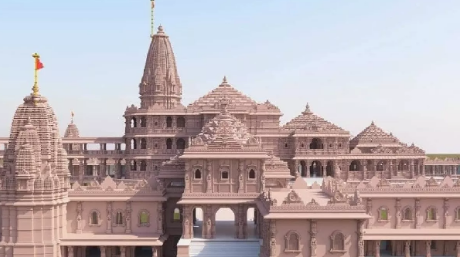
The Ayodhya Ram Mandir is more than just a temple—it is a symbol of faith, devotion, and centuries of belief. Situated in the sacred city of Ayodhya, believed to be the birthplace of Lord Ram, the temple is a powerful representation of India’s spiritual soul. This temple reflects the struggles, hopes, and dreams of millions of devotees across generations. It is not only a place of worship, but also a monument of historical and cultural importance.
Ayodhya and its Timeless Significance
Ayodhya, located in Uttar Pradesh, has been revered in Hinduism for thousands of years. It is said to be the city where Lord Ram was born and later ruled as an ideal king. This sacred town is one of the seven holiest pilgrimage sites in Hindu belief. Devotees visit Ayodhya to feel connected with Lord Ram and the moral values he represents. The importance of this city goes beyond religion—it is a cornerstone of Indian identity.
The Ancient Temple and Its Displacement
According to many ancient texts and local traditions, a grand temple dedicated to Lord Ram once stood at his birthplace. However, in 1528, the Mughal general Mir Baqi constructed the Babri Masjid at the same site. This marked the beginning of a centuries-long conflict over the land. Despite the mosque’s presence, Hindus continued to worship at the site, believing it to be sacred. The presence of the mosque over a claimed Hindu holy site led to disputes that shaped Indian history.
Decades of Legal and Social Conflict
In 1949, idols of Lord Ram mysteriously appeared inside the Babri Masjid. This incident fueled already existing religious tensions. Several legal petitions were filed by both Hindus and Muslims claiming ownership of the land. Over the years, the courts witnessed multiple cases, arguments, and hearings. In 1992, the Babri Masjid was demolished by a large group of kar sevaks, which led to violent riots and national unrest. The case continued in courtrooms for decades, until the historic verdict by the Supreme Court in 2019.
A Landmark Judgment and a New Beginning
On November 9, 2019, the Supreme Court of India gave a landmark decision. It ruled that the disputed land belonged to Hindus and allowed the construction of the Ram Mandir. It also ordered the government to provide an alternative site for a mosque. This decision marked the end of a long-standing dispute and the beginning of a new era of faith, peace, and unity.
The Foundation of a Dream
The foundation stone of the Ram Mandir was laid on August 5, 2020, by Prime Minister Narendra Modi. This Bhoomi Pujan ceremony was witnessed by millions through live telecasts across the world. The temple is being built by the Shri Ram Janmabhoomi Teerth Kshetra Trust with donations from people of all walks of life. It is a reflection of public emotion, collective effort, and spiritual unity.
A Marvel of Temple Architecture
The Ram Mandir is being constructed using pink sandstone in the traditional Nagara style of temple architecture. The structure will stand 161 feet tall, with three floors, five domes, and a grand shikhar. Beautiful carvings from the Ramayana will decorate the temple walls. The temple will also have a Ram Darbar, featuring idols of Lord Ram, Sita, Lakshman, and Hanuman. The construction avoids the use of iron and steel, making it a timeless masterpiece.
A Temple That Awakens the Soul
The Ayodhya Ram Mandir is not only a symbol of architectural excellence, but also a spiritual powerhouse. It represents dharma, justice, and the divine values of Lord Ram. Millions of devotees see the temple as the materialization of their faith and patience. As construction continues, people from across India and the world are expected to visit and pay their respects. Ayodhya is set to become a global spiritual hub.
The journey of the Ram Mandir is a remarkable story of resilience, belief, and national unity. It teaches us that truth and faith can overcome any obstacle. What once was a site of conflict is now a beacon of harmony. With each brick, the temple restores not only a structure, but also the faith of an entire nation. It is a tribute to Lord Ram and the values he stood for—truth, compassion, and justice.


































